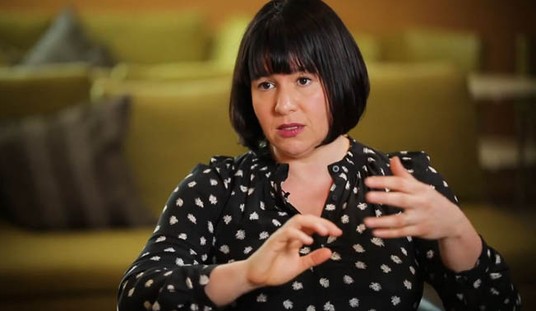This story is making the rounds today, partly because the finding is counterintuitive and partly because it supports the conservative case against capacity restrictions on businesses. If your risk of infection is the same indoors no matter where you are relative to someone else then what’s the point of trying to keep people physically distanced from each other by limiting capacity?
Imagine a sealed room that’s been filled with gas due to a leak. The leak has now stopped, but those gas particles have been dispersing and circulating around the room for hours such that their concentration in any one part of the room is basically the same as it is anywhere else. If you were to walk into the room, you’d be at equal risk of suffocating no matter where you stood.
But now imagine that you walked in and the gas leak was still happening. Doesn’t common sense tell you that you’d inhale more gas and be at greater risk the closer you got to the source of the leak? The gas would be more concentrated in the space around the point of origin and less concentrated further away.
The point of the MIT study, as I understand it, is that COVID particles operate the same way gas does in the first scenario. If there’s a certain amount of aerosolized virus lingering in the air in an indoor space *and* those particles have had sufficient time to disperse around the room, then the concentration at any single point in the room is apt to be the same as it is anywhere else. Whether you’re standing six feet from another person or 60 feet, you’re breathing in the same amount of SARS-CoV-2.
“We argue there really isn’t much of a benefit to the 6-foot rule, especially when people are wearing masks,” Bazant said in an interview. “It really has no physical basis because the air a person is breathing while wearing a mask tends to rise and comes down elsewhere in the room so you’re more exposed to the average background than you are to a person at a distance.”
The important variable the CDC and the WHO have overlooked is the amount of time spent indoors, Bazant said. The longer someone is inside with an infected person, the greater the chance of transmission, he said…
“What our analysis continues to show is that many spaces that have been shut down in fact don’t need to be. Often times the space is large enough, the ventilation is good enough, the amount of time people spend together is such that those spaces can be safely operated even at full capacity and the scientific support for reduced capacity in those spaces is really not very good,” Bazant said. “I think if you run the numbers, even right now for many types of spaces you’d find that there is not a need for occupancy restrictions.”…
“The distancing isn’t helping you that much and it’s also giving you a false sense of security because you’re as safe at 6 feet as you are at 60 feet if you’re indoors. Everyone in that space is at roughly the same risk, actually,” he noted.
No sense limiting capacity inside businesses if the risk of infection is the same no matter how many people are inside, right?
But … the risk isn’t the same. It’s only the same *if* (a) the viral particles in the room have had time to evenly disperse, which is a big if, and (b) no one in the room is infected and breathing out particles. If someone on the premises has COVID and is exhaling the virus, obviously it matters if you’re six feet away from them or 60 feet away because the concentration of particles around that person will be higher than it is on the other side of the room. It’s the difference between the first gas-leak scenario I described and the second. If there’s an active “leak” then distance matters. Potentially to a life-and-death degree.
And since we don’t know how many infected people might be inside a business at any given moment, everyone is potentially a “leak.”
Scientists who specialize in engineering and particle physics are tearing their hair out today on Twitter over how the MIT findings are being portrayed by CNBC, which titled its story, “MIT researchers say you’re no safer from Covid indoors at 6 feet or 60 feet in new study challenging social distancing policies.” That’s only true in the first gas-leak scenario, not the second where the virus is being exhaled by someone on the premises nearby in real time.
Please fix this headline, as the model they used ASSUMES that the room is instantaneously and continuously well-mixed, like if you blow a smoke ring, it immediately spreads evenly throughout the room in zero seconds. The headline is a tautology. @zeynep /1
— Linsey Marr (@linseymarr) April 24, 2021
The way the model is set up, there is the same amount of virus everywhere in the room, at all distances. It is an assumption the researchers made. /3
— Linsey Marr (@linseymarr) April 24, 2021
1/ Inhalation dose occurs in both the near field (close contact) and far field in the same indoor space. It is reasonable to assume that near field concentrations in the breathing zone are < 2 to 8 x the far field based on measurements & modeling. https://t.co/c03KtwsFcX
— Dr. Richard Corsi (@CorsIAQ) April 24, 2021
3/ Assuming the magnifier is 4 x, then 15 minutes in close contact with an infector is the same as 60 minutes in the far field. In each case the dose is the same and the probability of infection from those doses should be the same.
— Dr. Richard Corsi (@CorsIAQ) April 24, 2021
Writer Zeynep Tufekci cried foul too:
Perhaps the most important misunderstanding has been assuming aerosols=long distance only. No, they do not teleport from a person to over two feet away a la "beam it over there, Scotty." Aerosols ALSO concentrate around the person and dilute with distance. https://t.co/HFlqsUfv3r
— zeynep tufekci (@zeynep) April 23, 2021
Even if the MIT study said what people have misunderstood it to say, i.e. that your risk of infection indoors is completely unrelated to your distance from other people, I’m not sure it would strengthen the case for lifting capacity limits on businesses. Wouldn’t capacity limits still reduce the risk of infection by slowing the rate at which the room fills up with coronavirus particles, giving the building’s ventilation and filtration systems more time to expel those particles?
And if we got rid of capacity limits, shouldn’t we replace them with time limits? The MIT researchers themselves note that time is an important variable when you’re in a room where viral particles are in the air and well dispersed throughout. Same as in the first gas-leak scenario: You might not be overcome if you spent 30 seconds in a room filled with gas but 30 minutes is another matter. So, fine, repeal all capacity limits — but require all customers in indoor retail spaces to be in and out within a half hour. How does that sound?
Would that rule be better or worse than capacity limits for businesses like bars and restaurants, where customers want to relax and take their time while enjoying the wares?
If unvaccinated people’s takeaway from the MIT data is “don’t linger in indoor public spaces more than you need to,” then great. But if the takeaway is “distance doesn’t matter,” that’s clearly wrong. It doesn’t matter if and only if no infected people are in an indoor space and whatever residual viral particles in the air are completely evenly dispersed. We can’t know whether either of those things is true at a given moment when we enter a public space so which side should we err on? Maximum distancing or no distancing?








Join the conversation as a VIP Member